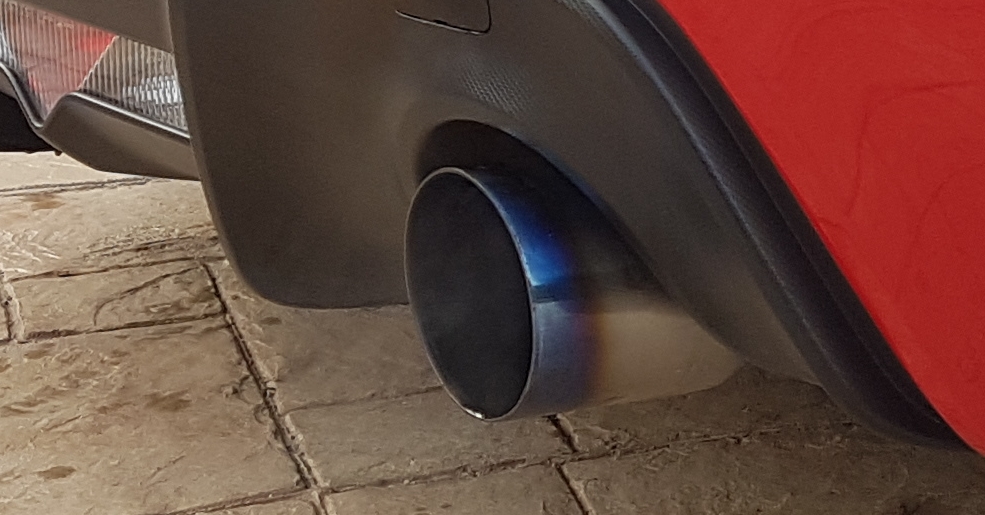Guide Naturally Aspirated NA Engine tuning and bolt on intake/exhaust mods for FRS BRZ 86 NA- Naturally aspirated FI - Forced Induction ie turbo/supercharger E85 - aprox 85% ethanol based fuel (will vary from pump to pump from about E65 to E85) Flex fuel Tune- requires a flex fuel sensor - device to detect ethanol content of fuel and integrated with appropriate tuning software can automatically adjust tune as ethanol content changes from full petrol to full E85 CAI - Cold Air Intake. E85 tune - tune for E85 fuel will cope with variation in ethanol content from about E60 to E90, will not cope with straight petrol, need to reflash back to petrol tune. (or switch maps manually if you have Ecutek) AFR - Air fuel Ratio. 02 sensor - oxygen sensor Canned, Off The Shelf (OTS) or Flash and Go tune - A tune done for a specific set of mods - your mods must match tune - cheaper than a custom dyno tune , on NA cars will probably yield 90% or more of possible gains Custom Dyno tune - tune done on a dyno for your specific car with your specific mods - on NA cars not that much gain over a Canned or OTS tune if your mods matched tune. Turbo/supercharged cars benefit much more from custom tuning. If you want more than about 35-40 wheel horsepower gain then your going to need to go Forced Induction FI either Turbo or Supercharger, just skip NA mods Exhaust Mods Most exhaust mods will make your car louder If you planning on going catless header or catless or high flow front pipe , get a quiet cat-back or keep the stock cat-back. The cats are very good at reducing noise and rasp/resonance/drone. If you remove second cat plan on adding a resonator in its place to reduce noise/rasp/drone. Most of the power gain in changing exhaust components comes from a catless header, the rest of the exhaust wont gain you much at all. Hi Flow catted headers will work but slightly less gain than catless headers, generally more expensive due cost of cat. Dyno numbers All dyno's read different. To compare results they really need to come from same dyno, or at least same dyno type using same calibration. You generally get about 15-20% loss through drive-train so a stock FRZ/BRZ/86 rated at 200hp at flywheel will generally dyno around 170hp at the wheels (WHp) Make sure your comparing wheel horsepower or flywheel (engine) horsepower and not mixing them up. Will I get a CEL code If you go to catless header you will get a CEL code P0420 (cat efficiency) it may thak a while to show up though. Even some catted headers will still cause a cel code You can try O2 spacers or de-foulers but they will not always work 100% The only 100% way is to disable the code in the ECU usually done in aftermarket tunes. Why you get CEL Code when changing header Integrated in header is a primary catalytic converter. Their is the primary 02 sensor before this cat and a secondary 02 sensor after it. The ECU compares the reading from both and works out if the primary cat (in header) is working efficiently. If it detects abnormal readings it will set CEL Code P0420. Changing any other exhaust components other than the header will not trigger a CEL code. Its only the primary cat in the header that is monitored by ECU, secondary cat in front pipe is not monitored
This image has been resized. Click this bar to view the full image. The original image is sized 1100x542.
Stock header showing both 02 sensors Tips for changing header 1. Always use new gaskets, if you re-use the old ones it will leak causing 02 sensors to read incorrectly 2. Run a thread tap or chaser (M18 x 1.5) through you new header 02 bungs to clean them up , 02 sensors should screw in by hand. If you force them they are easily damaged and the threads on 02 sensor easily stripped. 3. Put high temp anti-seize on header bolts and 02 sensor bung threads, DO NOT get any grease or anti-seize on sensor tips, once contaminated they are stuffed. 4. Leave the 02 sensors in the stock header until you remove it from car then remove sensors. Just disconnect the plugs an tethers on wires as per picture below. 5. Black plug to black socket, grey plug to grey socket. and remember to plug both back in. 6. Use correct torque for bolts and o2 sensors, re-torque after a heat cycle.
This image has been resized. Click this bar to view the full image. The original image is sized 1024x675.
Stock header is is Equal length stepped design , but its not perfectly equal length see diagram below of stock header with heat shields removed showing integrated cat
Tune only on completely stock car About 10 wheel hp Reduced torque dip arround 4000rpm smoother running smoother idle If you run E85 on completely stock car with appropriate E85 tune you can get about 20 Wheel HP gain. Catback exhausts Little power gain maybe 2 or 3 wheel hp , just do it for the sound- no cel code problems as your not altering the primary catalytic converter in header. Catted header (hi flow cat) without tune maybe 5 wheel hp you might still get CEL code due cat efficiency you can try the O2 sensor spacers or de-foulers on the second (rear) 02 sensor but they don't always fool the ecu and you might still get CEL code P0420 Catless Header without tune - 5 to 8 wheel hp You will definitely throw a CEL code eventually Again you can try the O2 sensor spacers or de-foulers on the second (rear) 02 sensor but they don't always fool the ecu and you might still get CEL code P0420 Catless header with tune (petrol) around 20 wheel hp Catless header with tune (E85 fuel) around 30 wheel hp Catted header with tune (petrol) about 15 wheel hp Tune will take full advantage of your header Tune will disable the P0420 cel code - no need for spacers or de-foulers Tune will further smooth out torque dip Smoother running, smoother idle Header types. Any decent well designed header will produce similar gains on an NA car EL header is traditional sound for a 4 cylinder UEL header is classic subaru boxer rumble , dropped cylinder beat, similar to wrx. EL header generally produce a couple more peak horsepower UEL header generally produce more low/mid-range power/torque but can fall a couple of hp short in top end compared to EL header. Their is really not that much in it just stay away from cheapo, dodgy brothers, Ebay headers. Pay the extra for a known and tested header. Changing the rest of exhaust after a catless header does not yield much more power on NA cars. E85 fuel. If you retune you car for E85 you can add about 10 wheel hp gain in addition to mods above. Intakes CAI short RAM ect The Stock intake is quite efficient for NA cars Maybe add a performance drop in filter and an intake tube but best to leave stock airbox and maf sensor location unchanged. Unless you have access to a tune to suit the new intake or you can do maf-scaling and a bit of tuning yourself Changing the entire intake ie (CAI or short RAM ect) will require the MAF (Mass air Flow) sensor to be recalibrated via a tune Their is little power in intakes for NA cars If you MAF scaling is way off due to your aftermarket intake (or you have an air leak in intake) you can get cel codes due to lean/rich limits If you MAF scaling is "off" by even 10%-15% it can still cause hesitation or bogging rough running and incorrect AFR. Just because an intake requires a MAF rescale does not mean its flowing more air, the MAF sensor just samples the air flowing through through the intake. So if the position of the MAF sensor is changed or the size of the tube the MAF sensor sits in is changed the sample will be different. It does not mean the intake is actually flowing more or less air, just means it not calibrated for that intake. Beware not all mods will produce cumulative power gains eg intake manufacturer claims intake add 5hp to stock car, maybe it does but its possible this is due to intake adjusting AFR due maf scaling errors . You now get a tune which adjusts afr and timing other parameters usually tune would add say 10hp. So you assume with your intake your going to get 15, often not the case. This can also happen with exhaust mods, your initial mods may produce some gains and the exhaust is flowing better, subsequent mods will have diminished gains as the exhaust now flows sufficiently well for the pumping capacity of the engine. Crawford power blocks seem to work quite well on stock cars as they alter volumetric efficiency, however so does tuning (adjusting intake/exhaust valve timing), and so does exhaust/intake mods . But the overall gains with all these components is often less than the gains of each individual component used by itself. Their are so many options its very difficult to predict the outcome. Cheapest Naturally Aspirated Power Gains Approx Wheel Horsepower Gains over stock Canned Tune Only petrol 10 wheel hp Canned E85 tune on stock car aprox 20 wheel HP Catless Header plus canned tune petrol 20 wheel hp Catless header plus canned tune plus E85 fuel 30 wheel hp. You can do Catless header + canned or off the shelf , flash and go tune on E85 or petrol for about $1000 if you fit header yourself. That about $30 per hp if your on E85 After that the last 10 hp is going to cost big To get near 40 wheel hp gain over stock you would have to do in addition to above mods Intake overpipe, hiflow secondary cat or catless front pipe cat back exhaust Custom dyno tune on E85 fuel. That going to cost you probably in excess of $2000 extra. ie about $200 per hp, time to think about Forced induction. Tuning options (ECU flash tuning) Ecutek OFT -Openflash Tablet BRZEdit Tactrix/Ecuflash You can get "piggyback" devices for these cars but we have a flashable ECU and flashing the ECU is a much better option than "piggyback" devices. Piggybacks like Uni-chip work by adjusting the ecu sensor inputs to fool the ecu. They are very limited in their adjustments and require wiring . Flashing the ecu allows hundreds of tables to be changed to specificly alter parameters and limits. You generally have the ability to flash the ecu back to "stock" in minutes so its virtually undetectable. Whatever flash tuning platform you use on an NA car you will get similar results power wise with a competent tuner You can run dedicated E85 or petrol tunes with all options, but an automated flex fuel system is only possible with Ecutek Dedicated E85 tunes will cope with the variance in ethanol content between fuel company's, but you need to flash back the petrol tune to go back to petrol. If you want true flex fuel (integrated flex fuel sensor) and map switching on the fly, then Ecutek is your only option at present and obviously that will cost you more. Flex fuel tune (with flex fuel sensor) will not give more power than a dedicated E85 tune but its more convenient and safer in case you filled up with wrong fuel. See links below for more info on tuning, logging ECU flashing , E85 ect. Hope this is useful. If you find errors or omissions let me know and i will fix it up.



